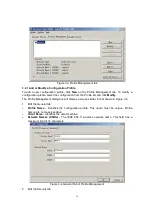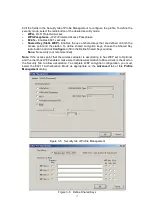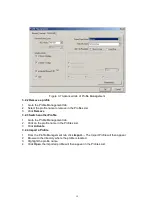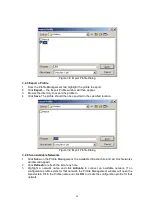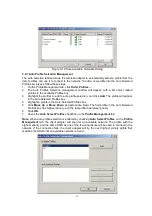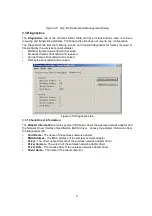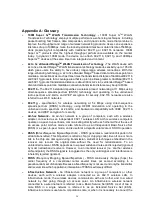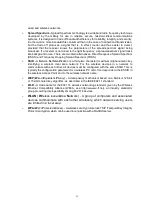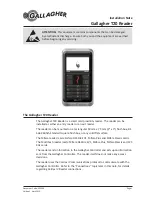
18
3. Edit the Advanced tab
Transmit Power Level - Selects the transmit power level for 802.11b/g in mW. Actual
transmit power may be limited by regulatory domain or hardware limitations.
Power Save Mode -
•
Maximum -
Selects maximum
mode to let the access point buffer incoming messages
for the wireless adapter. The adapter will detect the access point if any messages are
waiting periodically.
•
Normal - In Normal mode, the adapter will be switched to maximum mode
automatically when no large packets are retrieved.
•
Off - turns power saving off, thus powering up the wireless adapter continuously for a
short message response time.
802.11b Preamble - Specifies the preamble setting in 802.11b. The default setting is
Short & Long (access point mode), which allows both short and long headers in the
802.11b frames. The adapter can only use short radio headers if the access point supports
and uses them. Set to Long Only to override allowing short frames.
Wireless Mode - Specifies 2.4 GHz 54 Mbps, 2.4 GHz 11 Mbps, or Super G (Only for
108M Wireless MINIPCI Adapter) operation in an access point network. The wireless
adapter must match the wireless mode of the access point with which it associates
Wireless Mode when Starting an Ad Hoc Network - Specifies Super G (Only for 108M
Wireless MINIPCI Adapter) or 2.4 GHz 54/11Mbps to start an Ad Hoc network if no
matching network name is found after scanning all available modes. This mode also allows
the selection of the channel the wireless adapter uses. The channels available depend on
the regulatory domain. If the adapter finds no other ad hoc adapters, the channel that the
adapter starts the ad hoc network with will be selected automatically. The wireless adapter
must match the wireless mode and channel of the clients it associates.
802.11 Authentication Mode - Select which mode the wireless adapter uses to
authenticate to an access point:
•
Automatic causes the adapter to attempt authentication using shared, but switches it to open
authentication if shared fails.
•
Open System enables an adapter to attempt authentication regardless of its WEP settings. It will
only associate with the access point if the WEP keys on both the adapter and the access point
match.
•
Shared-key only allows the adapter to associate with access points that have the same WEP key.
For infrastructure (access point) networks, click Preferred APs… to specify up to four access
points to the client adapter that attempts to be associated to the access points.
Summary of Contents for EMP-8603
Page 1: ...IEEE 802 11a b g Wireless MiniPCI Card User s Manual V1 0...
Page 14: ...13 Figure 2 9 Finish...
Page 28: ......













